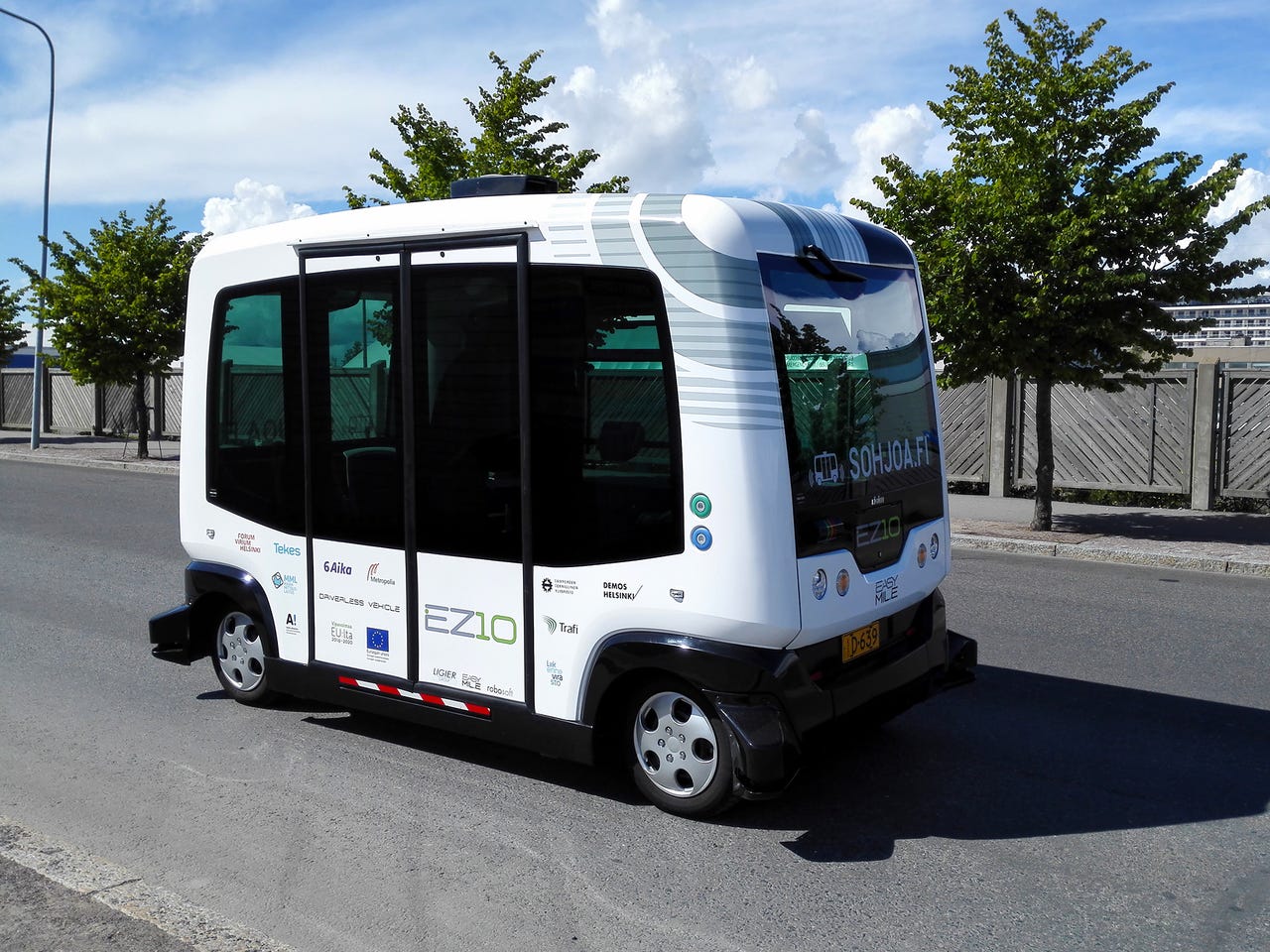Don't try talking to the driver: In Nokia city Espoo, robot buses now cruise the streets


In the month-long trial, the buses will transport up to nine passengers on a short fixed route, sharing the road with normal traffic.
It looks like a minibus and moves like a minibus. But a closer look reveals why this vehicle is turning heads on the streets of Espoo, Finland: there's no driver.
The presence of these electric vehicles in Espoo is because it's the location for one of the first pilot projects in the world to trial the use of self-driving buses on open public roads, offering passengers free transport.
"There have been some experiments on public roads, but still so few that we need a lot more experience with it to really move [development] forward," says Harri Santamala, manager of the pilot project at Helsinki Metropolia University of Applied Sciences.
In the month-long trial, two French-made EasyMile EZ10 electric buses will transport up to nine passengers on a short fixed route, sharing the road with normal traffic in Espoo.
The buses use vision, laser, and differential GPS technologies to sense their surroundings and move at a leisurely speed of up to 7mph. Although they are self-driving and have no steering wheel, for the trial there will always be an 'operator' inside to monitor the journey.
The pilot scheme follows a similar trial in the Finnish capital Helsinki in August, but steps things up with a slightly more complex route with more turns and stops.
Santamala says the goal of the EU-funded project, which is collaboration between several public-sector partners, is to examine how smoothly robot buses fit into real-life traffic, how the public reacts to them, and to assess these vehicles as a way of reducing city congestion.
Current thoughts see the buses used in 'last mile' transportation to complement the existing public transportation system. A self-driving minibus could, for example, pick up a passenger from their front door and take them to the nearest train station. Santamala believes the first robot-bus-operated routes could be seen in Finland within a few years.
But for now, the EZ10 buses will be used as guinea pigs for companies developing complementary technologies for automated road traffic.
Official details of the upcoming tests have yet to be released, but the buses are currently being used by Finnish startup Vionice to test how the status of the surrounding traffic infrastructure can be recorded and reported from the buses using smartphone cameras.
"It seems two kinds of companies are particularly interested in this," Santamala says. "Some, like Vionice, test product and service concepts that enable [automated] vehicles to operate on public roads. [The second, which] is now starting to raise interest is how these vehicles can be used after it has been ensured they can operate safely in traffic."
The project team is also building a virtual platform to test hardware and software integration outside the buses. The first case will be a traffic-light control system in the pilot areas, with the platform later opened for third parties to use.
After the pilot in Espoo, the buses will move to Tampere, central Finland, before the trials are put on hold for the winter months. The robot buses will return to the streets in the spring with the pilots continuing until 2018.
The Finnish robot bus pilot comes as the race heats up to bring autonomous vehicles on the streets. Most notably Google has been testing driverless cars for years, Tesla has hinted its next model will enable autonomous driving, Uber has trialed a fleet of self-driving cars in Pittsburgh, and Swedish car-manufacturer Volvo plans to expand its testing of driverless cars to London in 2017.
The Finns see this wide interest in automated transportation as a major opportunity for the country. Traffic legislation in Finland is among the world's most permissive when it comes to testing autonomous vehicles, as a driver is not required to be inside the vehicle.
Tommi Arola, ministerial adviser at the Finnish Ministry of Transport and Communications, says, unlike many countries, Finland's legislation doesn't define where a driver should be in a vehicle or require that their hands are on the wheel at all times.
"This enables, among others things, driving a vehicle from a remote-control center and advanced automation experiments even on public roads," he says.
Arola stresses there are still many obstacles to truly autonomous transportation, not least in Finland's case the varied weather, which includes heavy rain and snow. But these vehicles are firmly on the road, and with no humans at the wheel.